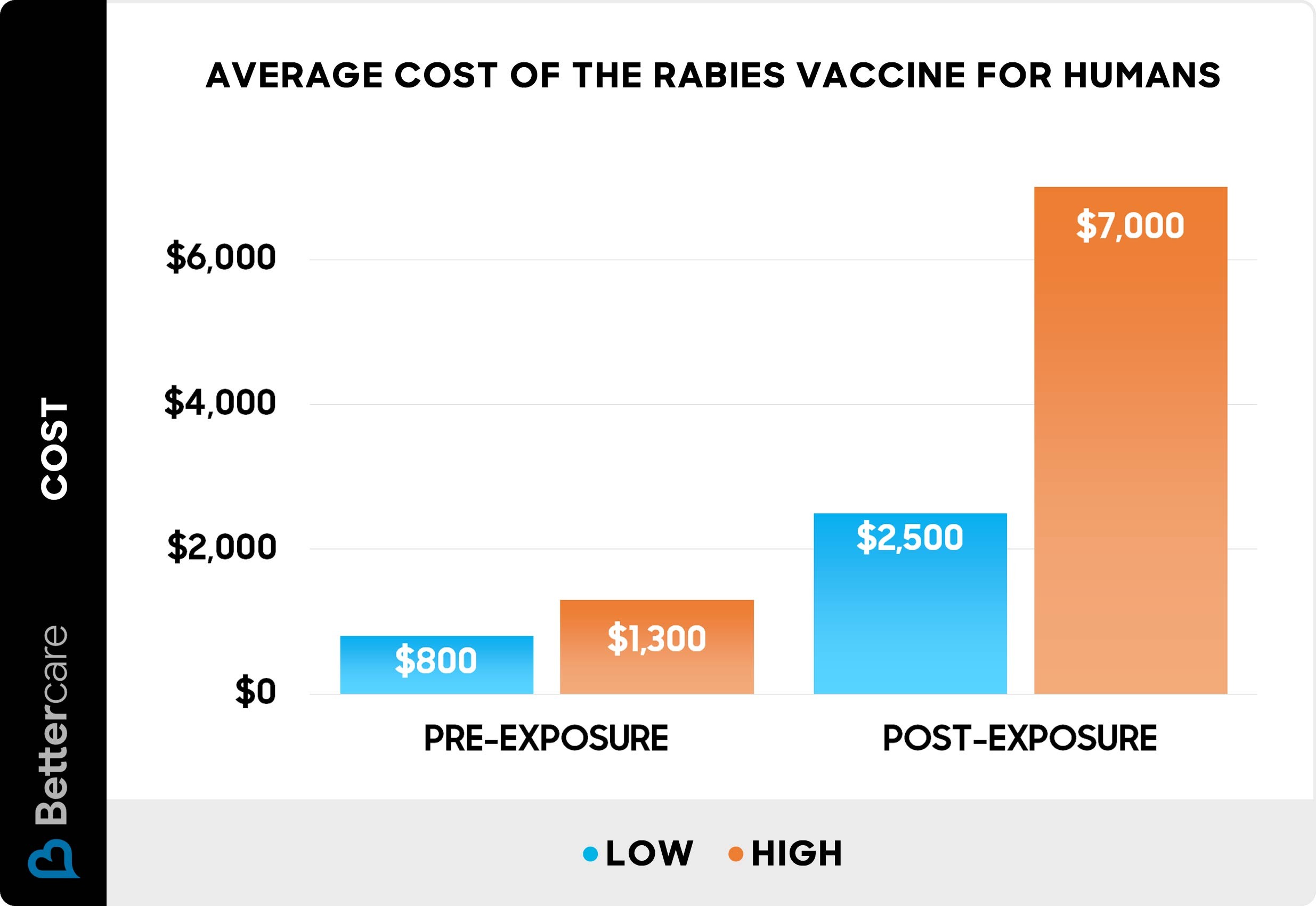The cost of a rabies vaccine for humans can range from $2,500 to $7,000 for the complete post-exposure prophylaxis (PEP) which includes four doses and human rabies immune globulin (HRIG). Pre-exposure vaccination (PrEV), designed for individuals at higher risk, typically costs between $800 and $1,300 for a two-dose series. Considering that rabies is almost invariably fatal if left untreated, this vaccination is a crucial, life-saving intervention following potential exposure to a rabid animal.
Alt: Chart illustrating the cost comparison of pre-exposure and post-exposure rabies vaccine, detailing vaccine protocol and average total cost.
Understanding the cost implications, along with the necessity of the vaccine, is essential for those who may be at risk.
Understanding the Rabies Vaccine and How It Works
Rabies is a severe viral infection of the central nervous system that is nearly always fatal once symptoms appear. The virus is transmitted through the saliva or brain/nervous system tissue of an infected mammal. Typically, this occurs via a bite or scratch. Immediate vaccination and treatment are critical to prevent the virus from taking hold.
Post-Exposure Prophylaxis (PEP) Explained
Post-exposure rabies treatment is administered to individuals who have potentially been exposed to the rabies virus. The PEP involves a series of rabies vaccine injections alongside human rabies immune globulin (HRIG).
HRIG provides immediate, passive immunity by introducing antibodies that neutralize the rabies virus. This gives the body a head start in fighting off the infection while the rabies vaccine stimulates the body’s own immune response.
- Not Previously Vaccinated: Four doses of the rabies vaccine are administered on days 0, 3, 7, and 14, along with a HRIG injection on day 0.
- Previously Vaccinated: Only two doses of the vaccine are needed, administered on day 0 and day 3. HRIG is not required if you’ve previously received a complete pre-exposure or post-exposure vaccination.
Pre-Exposure Vaccination (PrEV): Who Needs It?
The Centers for Disease Control and Prevention (CDC) recommends pre-exposure vaccination for individuals at high risk of rabies exposure. This includes:
- Veterinarians and veterinary technicians
- Animal control officers
- Cave explorers
- Wildlife rehabilitators and workers
- Laboratory workers handling the rabies virus
- Travelers to regions where rabies is common
Pre-exposure vaccination doesn’t eliminate the need for additional treatment after a potential exposure, but it simplifies the post-exposure treatment, reducing the number of required doses and eliminating the need for HRIG.
Rabies Vaccine Dosage: Pre-Exposure vs. Post-Exposure
The rabies vaccine dosage schedule differs significantly based on whether it’s administered for pre-exposure prevention or post-exposure treatment.
- Pre-Exposure (PrEV): This involves two doses given seven days apart. Booster doses may be recommended periodically for individuals with ongoing risk.
- Post-Exposure (PEP): For individuals not previously vaccinated, PEP includes four vaccine doses on days 0, 3, 7, and 14, along with a single dose of HRIG administered as soon as possible after exposure. Those previously vaccinated only require two booster doses on days 0 and 3.
Possible Side Effects of the Rabies Vaccine
While the rabies vaccine is considered safe, it can cause side effects, which are typically mild and temporary. Common side effects include:
- Pain, redness, swelling, or itching at the injection site
- Headache
- Nausea
- Muscle aches
More severe side effects are rare but can include allergic reactions like hives, difficulty breathing, or swelling of the face, lips, tongue, or throat. It’s essential to seek immediate medical attention if you experience any signs of a severe allergic reaction after receiving the vaccine.
Alt: Close-up of a gloved hand holding a vial of rabies vaccine and syringe, illustrating medical preparedness for rabies prevention.
Answering Your Questions About the Rabies Vaccine
How Long Does the Rabies Vaccine Last?
Pre-exposure vaccination (PrEV) provides protection for approximately two years. Individuals at continued risk should receive booster doses as recommended by their healthcare provider. Post-exposure prophylaxis (PEP) is designed to provide immediate protection following a potential exposure and doesn’t offer long-term immunity.
How Effective Is the Rabies Vaccine?
The rabies vaccine is exceptionally effective, approaching nearly 100% when administered promptly and correctly after exposure, along with HRIG. Without vaccination, rabies is almost always fatal once symptoms develop.
Is the Rabies Vaccine Safe?
Yes, the rabies vaccine is considered safe for individuals of all ages. It contains an inactivated (killed) virus and cannot cause rabies. As mentioned earlier, side effects are usually mild and self-limiting.
Will My Insurance Cover the Rabies Vaccine?
Most health insurance plans, including Medicare, typically cover the rabies vaccine when it’s medically necessary due to a potential exposure. However, coverage for pre-exposure vaccination can vary. It’s recommended to check with your insurance provider to understand your specific coverage details, including any copays or deductibles.
Where to Get the Rabies Vaccine
Post-exposure rabies vaccine (PEP) can be obtained at:
- Hospitals
- Local health departments
- Some doctors’ offices and urgent care clinics
Due to the urgent nature of PEP, it’s crucial to seek treatment immediately following a potential exposure. Contact the facility in advance to confirm vaccine availability.
Pre-exposure rabies vaccine (PrEV) is available at:
- Travel vaccination clinics
- Pharmacies
- Your doctor’s office
Protecting Yourself from Rabies
Understanding the cost of the rabies vaccine is essential, but the value it provides in preventing a fatal disease is immeasurable. If you believe you’ve been exposed to rabies, seek immediate medical attention. For those at high risk, pre-exposure vaccination is a proactive step towards safeguarding your health. Always consult with your healthcare provider to determine the best course of action for your individual circumstances. Remember, rabies is preventable with timely and appropriate medical care.
